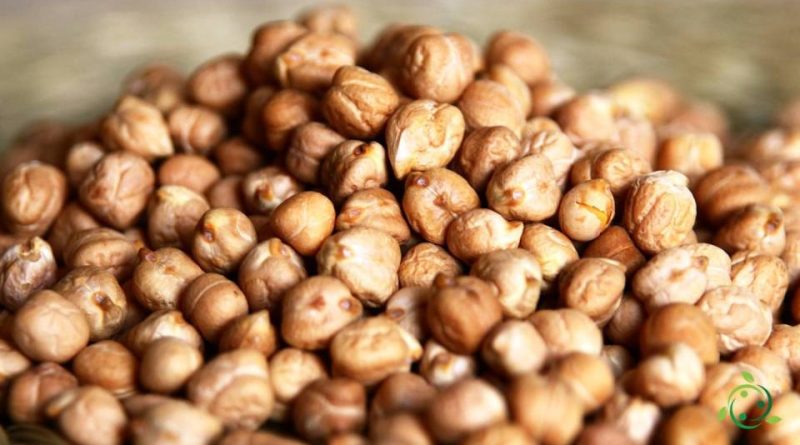Nutritional value of chickpea
Nutritional value of chickpea
Chickpea (Cicer arietinum L.) is a herbaceous plant of the Fabaceae family whose seeds are widely used in human nutrition for their excellent protein source.
Features –
The chickpea is an annual plant that has a deep branched root that can reach a depth of 1.20 m, a characteristic that gives it an average resistance to drought.
It has branched, erect and hairy stems with a variable height between 40 and 80 cm.
The leaves are opposite and composed with 6-7 pairs of elliptical and denticulated leaflets; the flowers can be white, pink or red; the seeds, rounded, smooth or wrinkled, are edible.
Nutritional factsheet –
Chickpea is a legume with excellent nutritional value.
100 g of dried chickpeas provide, on average:
– 316 kcal;
– Protein 21 g;
– Fats 6.3 g;
– Carbohydrates 47 g;
– Sugars 3.7 g;
– Fiber 13.6 g.
Chickpeas are therefore the richest legumes in calories and fat (second only to soy) and provide good amounts of vegetable protein.
Chickpeas are a source of polyunsaturated fatty acids, including linoleic acid, extremely useful for fighting inflammatory processes and lowering cholesterolemia. They also provide a good quantity of proteins of medium biological value; chickpeas are deficient in some essential amino acids, in particular methionine and cysteine, but when combined with grains, pasta and bread they give life to complete and nutritious dishes.
Chickpeas also contain a good amount of mineral salts, such as:
– Calcium 142 mg;
– Phosphorus 415 mg;
– Iron 6.4 mg. The latter being vegetable iron (non-heme) is less bioavailable than that coming from foods of animal origin (heme iron): however, by associating chickpeas with a food rich in vitamin C (e.g. tomatoes, peppers but also fruit fresh) we will be able to make it more bioavailable and maximize its absorption.
Chickpeas are also a good source of:
– Thiamine (vitamin B1);
– Niacin (vitamin B3 or PP).
They are a source of saponins and fibers, in fact they have 13.6 g per 100 g.
Property –
The properties of chickpeas for health are diverse and numerous, in summary they can be summarized as follows:
– The fibers and proteins of chickpeas, promote satiety;
– They improve blood sugar;
– Promote gastrointestinal health;
– They reduce the cardiovascular risk;
– They counteract the development of cancer and diabetes 2;
– Promote brain health;
– Being rich in iron, finally, they counteract anemia.
For these characteristics, the chickpeas, for their good energy intake, mainly consisting of carbohydrates, contribute to covering the daily caloric needs. However, this is not excessive since, despite being semi-starchy, the glycemic load is still of medium entity, to the advantage of those who should follow a low-calorie slimming diet.
By virtue of the richness of fibers, these should have a rather low glycemic and insulin index, more advisable also in the treatment of type 2 diabetes mellitus and hypertriglyceridemia. The presence of “good” fatty acids and equally beneficial nutritional factors (lecithins and antioxidants) makes them suitable for dietary therapy against hypercholesterolemia.
The dietary fibers of chickpeas are also excellent prebiotics and intestinal regulators. They nourish the physiological bacterial flora and prevent constipation or constipation.
Chickpeas are suitable for the diet for celiac disease, lactose and histamine intolerance. Instead, they should be taken in moderation in case of hyperuricemia and possibly to be avoided in phenylketonuria.
Finally, it is emphasized how the richness in folic acid makes them advisable in the diet of the pregnant woman. However, we remind you that cooking significantly reduces its content.
Guido Bissanti

